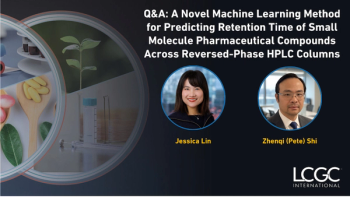
Developments in Functional Materials for Sample Pretreatment of Plant Growth Regulators Prior to LC–MS Analysis
Plant growth regulators (PGRs) have significant effects on plant physiological processes, but the complex matrices of plants, along with polarity and instability issues inherent with PGRs, complicate trace analysis of these compounds.
A new study in the Journal of Chromatography A investigates the composition of plant growth regulators (PGRs), which are defined as small molecular compounds that do exactly what one might think: regulate the growth and development of plants (1). The authors of this research, whose work is based in Jilin, China, sought specific improvements to the functional materials used for sample pretreatment to try and enhance the recognition, adsorption capacity, and environmental friendliness of the solid-phase extraction (SPE) process.
As the researchers explain, “classic” SPE sorbents such as silica become unstable if the pH value of aqueous samples is not within the range of 2–8. This is because silica dissolves in alkaline conditions, and hydrolizes in acidic ones (1). And moreover, a greener approach was desired for this experiment versus what commercial sorbents and SPE systems can typically provide. This research team focused on developing functional materials with stable properties to withstand a wide range of pH values, also introducing specific functional groups—listing among them -NH2, -NO2, -OH, -COOH, and -SH—on the surface of the adsorbent material to improve performance.
By applying these sample pretreatment conditions (with a range of one-, two-, and three-dimensional materials devised), the researchers hoped to pre-concentrate target analytes and eliminate matrix effect interference, in addition to correcting the pitfalls of wide polarity and unstable chemical makeup. Analytes were then determined by liquid chromatography coupled to mass spectrometry (LC–MS), the standard for PGR analysis (1).
Still, the question remains: Why go to so much trouble to break apart PGRs? The researchers answered that in part by delving into several of the 10 classifications of these compounds, such as strigolactones (SLs) and brassinosteroids (BRs). SLs and BRs in particular, they said, are “neutral” compounds that lack ionizable functional groups, presenting a roadblock to maximum MS efficiency, further mentioning a “trade-off” between broad adsorption and complete extraction (1). In this case, the study describes thiol-functionalized nanofiber pads and multi-walled nanotube covalent organic backbone composites, which were found not only to provide stability, but also to have good reusability in repeated applications. (The researchers also mentioned that a porous polymer monolithic column material used as SPE sorbent could be recycled some 600 times.)
Finally, one of the overarching goals of this study was to make PGR extraction and analysis a faster, simpler process, which the authors felt they accomplished (1). Though most of the study focuses on adjustments to the extraction phase, the end result of efficient and effective separation was not ignored. Taken as a whole, the study is suggested as a preview of future trends in the extraction of plant growth regulators from a wide range of plant species across the globe.
Reference
(1) Zhang, D.-X.; Wang, M.-Y.; Lin, W.-B.; et al. Recent advances in emerging application of functional materials in sample pretreatment methods for liquid chromatography–mass spectrometry analysis of plant growth regulators: A mini-review. J. Chromatogr. A 2023, 1704, 464130. DOI:
Newsletter
Join the global community of analytical scientists who trust LCGC for insights on the latest techniques, trends, and expert solutions in chromatography.




